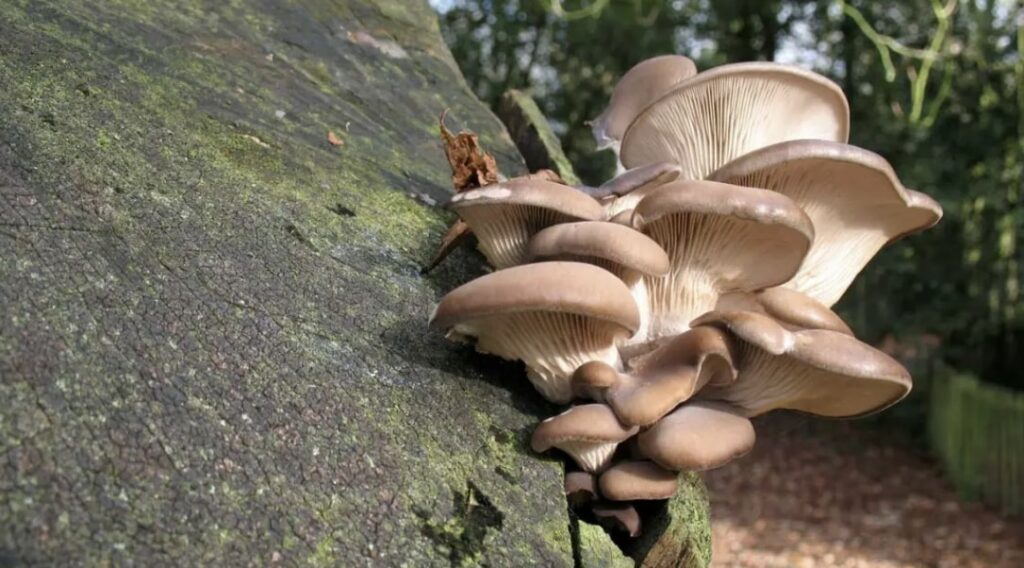Mushrooms in our garden beds are nature’s way of saying, “Surprise, I brought a fungus!” Sometimes they can end up being the life of the party, and sometimes they can be a bit scary, especially if you don’t know what they bring to your garden.
Whether you’re an avid gardener or a budding mushroom connoisseur, encountering mushrooms in your garden bed can be as puzzling as deciphering hieroglyphics in the dark.
But don’t worry, we got you! We’ve put in the work to answer questions about these fungal flora so you won’t have to wonder anymore!
Why do mushrooms appear in garden beds?
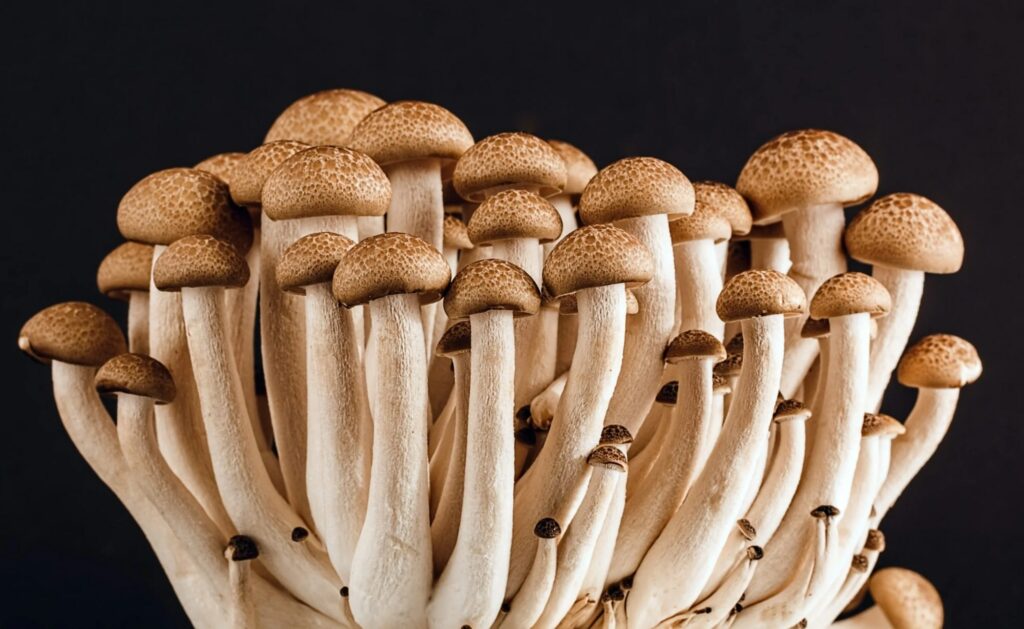
Mushrooms can show up in your garden unexpectedly like an organic surprise. While they might make your space look more populated, it’s best to know why they appear and if they can harm your garden.
Decomposition Process
Mushrooms appear in garden beds because they help break down organic matter. They’re the fruiting bodies of fungi and thrive on decomposing roots, leaves, and plant debris in your soil.
While doing this, they release valuable nutrients that enrich the soil. This makes them pretty handy when it comes to making sure your garden soil is healthy and nutrient-rich.
Moisture and Humidity
Mushrooms flourish really well in wet areas. If your garden bed doesn’t drain well, the soil can become a breeding ground for mycelia and mushrooms, whether you want it or not.
Spores Everywhere
Mushrooms reproduce through spores. They’re usually spread through the air, the rain, interactions with creatures, or contaminated garden tools.
When they land in the right place with the right conditions, you can bet mushrooms show up almost overnight just like that.
Underground Networks
Let’s begin with the tale of the mycelium kingdom. It’s a vast network of tiny threads in the soil that connects plants and enables them to communicate with each other in their own secret language.
Under certain conditions, mycelium can produce mushrooms as part of its reproductive cycle, explaining why mushrooms can appear unexpectedly even if you haven’t seen them before.
Are garden bed mushrooms harmful?
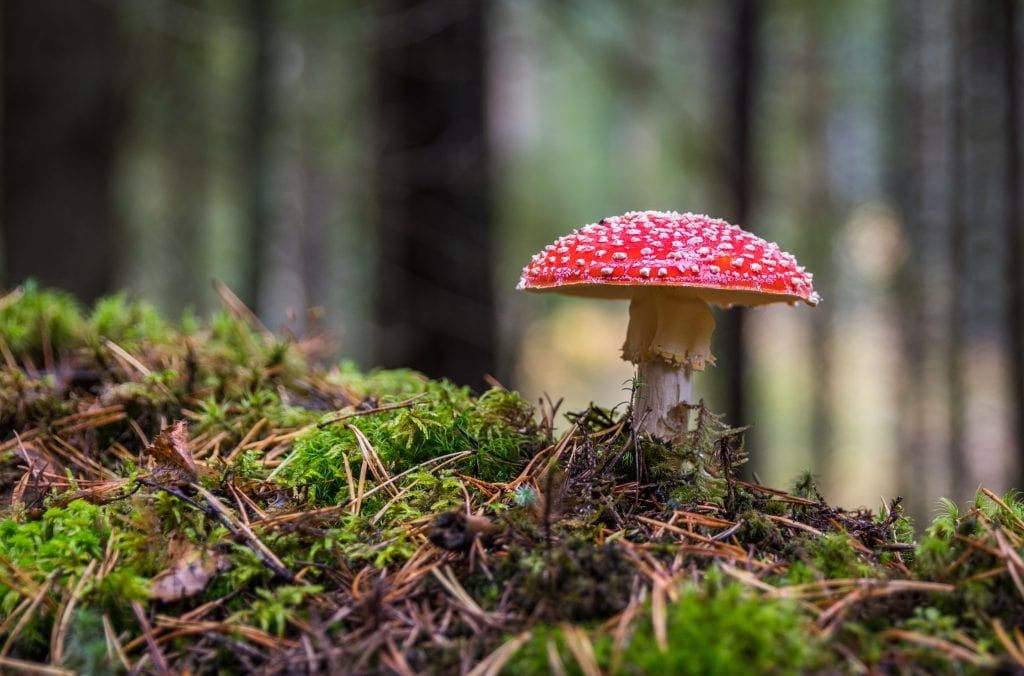
When mushrooms pop up in your garden, they might make you wonder and worry. Don’t worry. Garden bed mushrooms are not always harmful, but it pays to know which ones are safe and which ones aren’t.
Toxicity Variability
Many mushrooms are safe to handle or eat as long as correctly identified. Others can be poisonous and harmful if consumed.
Identification Challenges
Some safe-looking mushrooms look like poisonous ones and vice versa. Be very careful with them unless you’re pretty sure they’re safe.
Identifying mushrooms can be tough, even for experts. That’s why when in doubt, don’t.
Allergic Reactions
Even safe non-toxic mushrooms can trigger allergies in people, especially those sensitive to fungi. Contact with mushrooms or spores can lead to skin irritation, breathing issues, or eye discomfort in certain people.
Pets and Children
If you have pets or young children who play in your garden, you need to be careful about mushrooms. Pets might eat mushrooms, causing health issues.
Kids might also be curious and not know the dangers of mushrooms.
The Silver Lining
Even though there might be worries, most mushrooms in garden beds aren’t harmful. Actually, many show that the soil is healthy due to the numerous organic materials and helpful microorganisms that make the soil better for plants.
Identifying Garden Bed Mushrooms
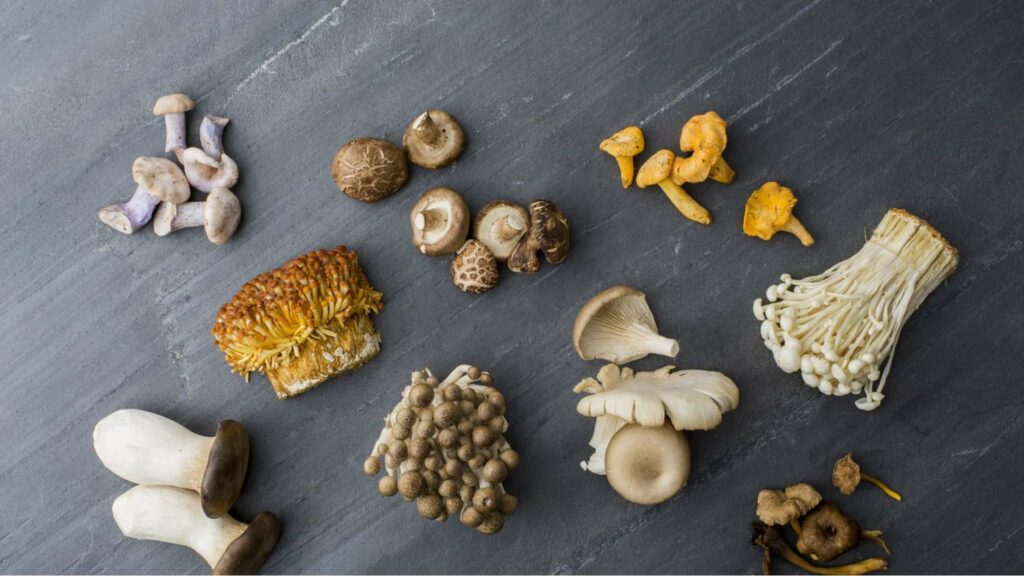
| Factor | Description |
| Expertise Level | Novice to Intermediate ●●○○○ |
| Suitable for | Homeowners without allergies to fungi or mushrooms |
| Benefits | Helps identify mushrooms accurately, enhances safety in mushroom foraging |
| Possible Risks | Misidentification can lead to poisoning or sickness, need to rely on accurate interpretation of field guides |
Identifying garden bed mushrooms can be an educational aspect of gardening. Mushrooms come in various shapes, sizes, and colors in garden beds, so it’s best to identify them correctly.
How to Identify Basic Garden Mushrooms
1. Check the mushroom cap.
Look at the cap’s size, shape, color, and texture. Double-check whether the cap is flat, convex (curving outward), or concave (curving inward).
2. Inspect the gills or the pores.
Using a pair of gardening gloves, flip the mushroom over and inspect the underside. Note the presence of gills or pores, and observe their arrangement and color.
3. Observe the stem.
Examine the stem of the mushroom. Note its length, thickness, color, and texture.
4. Check for spore prints if possible.
If possible, create a spore print by placing a mature mushroom cap, gills/pores down, on a piece of white paper for several hours. The color of the spore print can be a valuable clue for identification.
5. Use field guides and online resources.
Since many mushroom species can be challenging to identify, consult field guides or reputable online resources dedicated to mushroom identification.
If you are uncertain about the identification of a mushroom or its safety, ask an experienced mycologist (a fungi expert) or someone knowledgeable about fungi for expert advice.
6. Know common garden bed mushrooms.
Familiarize yourself with common garden bed mushrooms in your region. Recognizing the common ones can help you narrow down possibilities.
Planter’s Tips
- If you are unsure about a mushroom’s edibility or safety, it is always safer not to consume it.
- Remember that some mushrooms are toxic, and touching or consuming them can lead to serious illness or even death.
- Remember that mushroom identification can be challenging, and mistakes can have serious consequences.
- Take your time, use reliable resources, and when in doubt, err on the side of caution. Safety should always be a top priority when dealing with wild mushrooms.
12 Common Mushrooms That Can Appear in Garden Beds
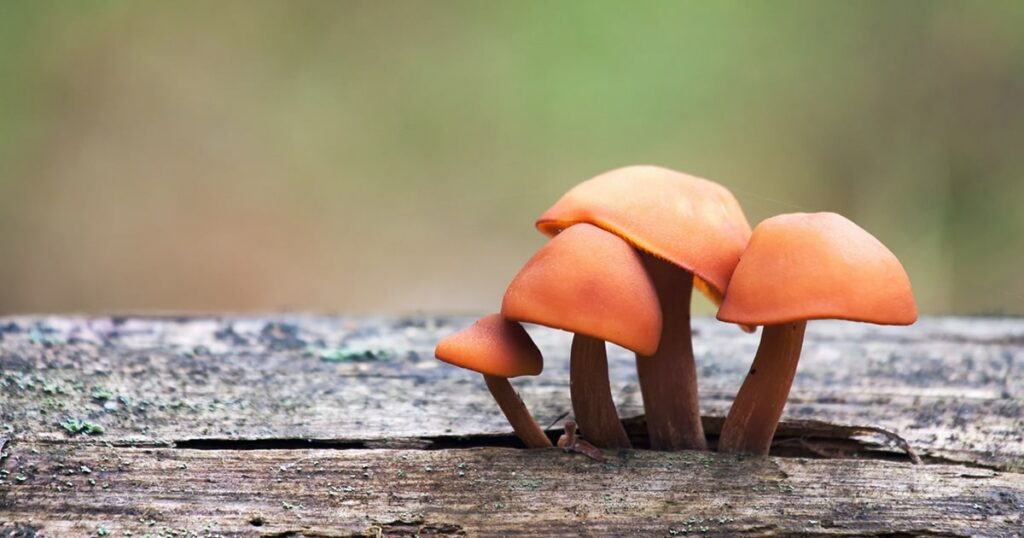
Mushrooms can look quite magical or at least inspire the creative side in us. Plus, they can pop up at any time, which makes them even more curious.
We just never know when they decide to come out because their spores do tend to spread far and wide. To help you out, we’ve listed mushrooms that commonly show up in garden beds so you can identify them a lot faster!
Button Mushroom (Agaricus bisporus)
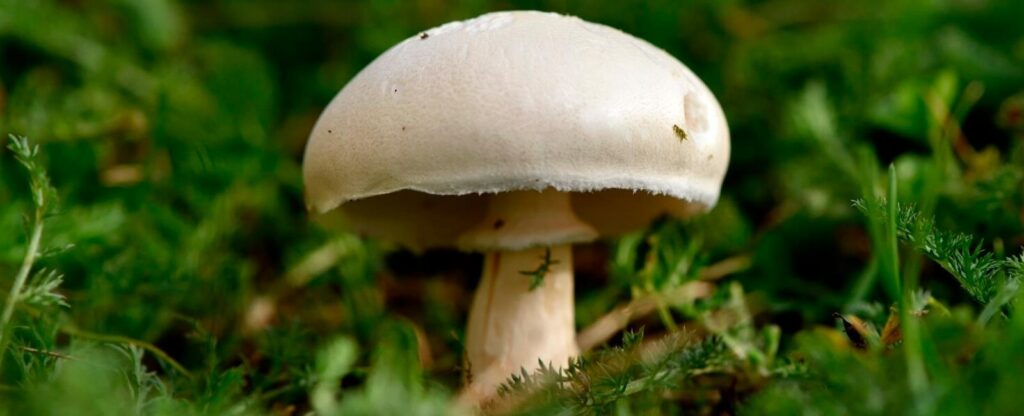
| Factor | Description |
| Ease of Identification | Easy ●○○○○ |
| Toxicity Level | Generally non-toxic when found in gardens |
| Possible Risks | Some individuals may have allergies or intolerances to mushrooms. |
Button mushrooms are small, easy to spot, and widely eaten mushrooms found worldwide. In the beginning, they have small, white, umbrella-shaped caps that later flatten out.
Underneath, their gills start pink but turn brown as they mature. They have a mild, earthy smell and are used in dishes like salads, sautés, and soups.
If you come across some in your garden bed, just know that some toxic ones can look like button mushrooms.
Common White Mushroom (Agaricus arvensis)
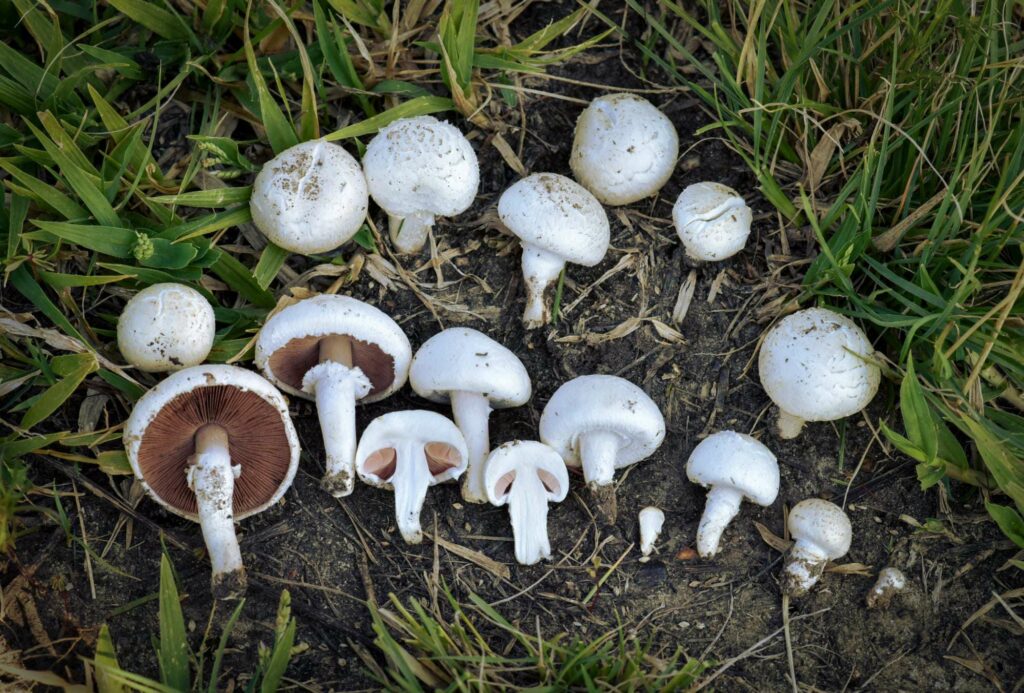
| Factor | Description |
| Ease of Identification | Easy ●○○○○ |
| Toxicity Level | Generally non-toxic when found in gardens |
| Possible Risks | May be confused with toxic Amanita species. |
The Common White Mushroom has a white cap, usually 2 to 6 inches wide, with pink or light brown gills underneath. The stem is sturdy.
Generally, garden Common White Mushrooms are safe to eat if you want to consume them. But, don’t assume safety because some toxic mushrooms can look similar.
The main risk is mistaking them for toxic Amanita species like the Death Cap, which is very poisonous. To be safe, be sure of the ID or consult an expert.
Puffball Mushroom (Lycoperdon spp.)
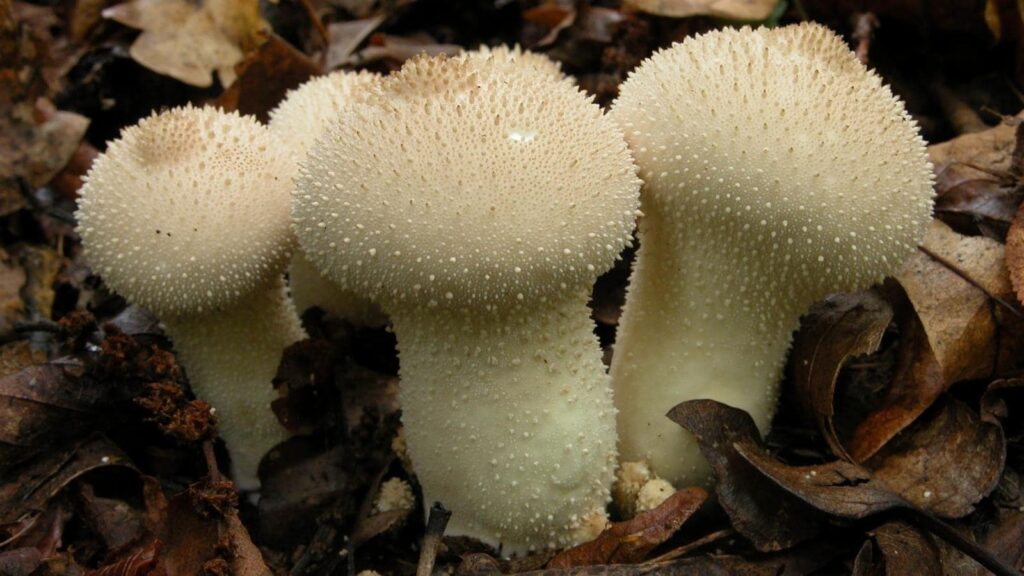
| Factor | Description |
| Ease of Identification | Easy ●○○○○ |
| Toxicity Level | Generally safe to handle and touch. |
| Possible Risks | Puffballs can be confused with immature Amanita species, some of which are toxic. |
Puffball mushrooms are round, ranging from golf ball to softball size, and come in white to brownish colors. When mature, they release spores in a puff of dust when gently touched or squeezed.
Puffball mushrooms are generally safe to handle. Just be a bit cautious, especially with immature ones, as they might be confused with toxic mushrooms like young Amanita species.
Shaggy Mane (Coprinus comatus)
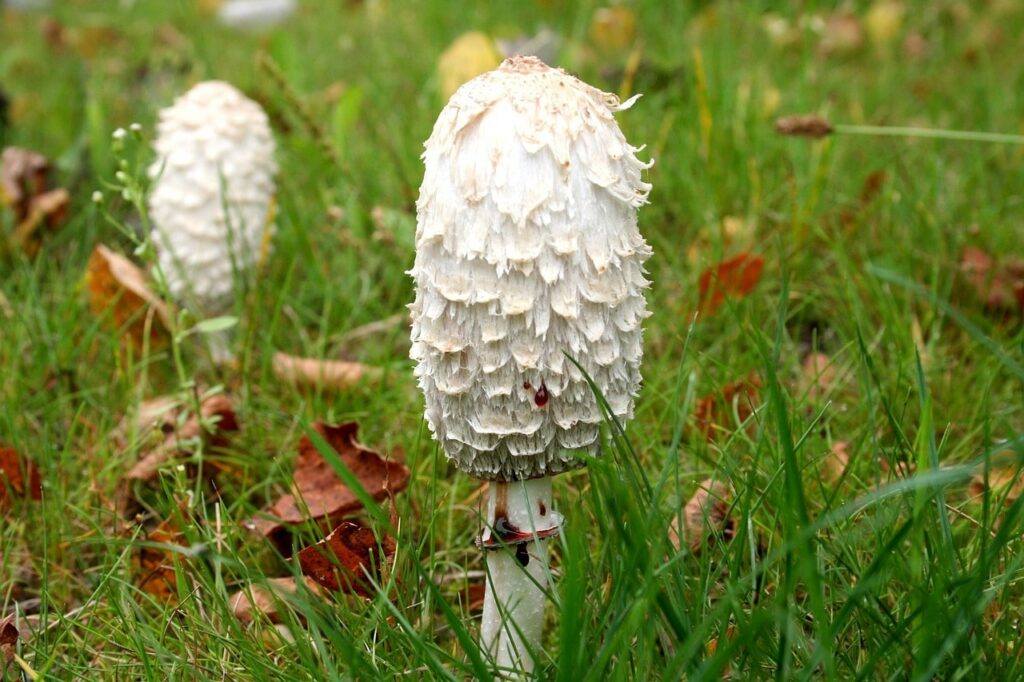
| Factor | Description |
| Ease of Identification | Easy ●○○○○ |
| Toxicity Level | Generally considered edible, low toxicity. |
| Possible Risks | Spoils quickly, must be consumed fresh. |
The Shaggy Mane mushroom looks like a mop of white hair and is easy to spot due to its unique shape. When it’s young, the cap is white, but it gradually turns brown as it matures, starting from the edges.
This mushroom usually stands 4 to 10 inches tall. It has a cylindrical or slightly conical cap covered in shaggy, elongated scales, giving it the appearance of a shaggy mane.
The Shaggy Mane self-digests as it matures. The cap eventually turns into a black, inky substance, which is a part of the unique aspect of its life cycle.
Adding the Shaggy Mane to your garden can be intriguing, not just for its appearance but also for its role in breaking down organic matter.
Fairy Ring Mushrooms (Various species)
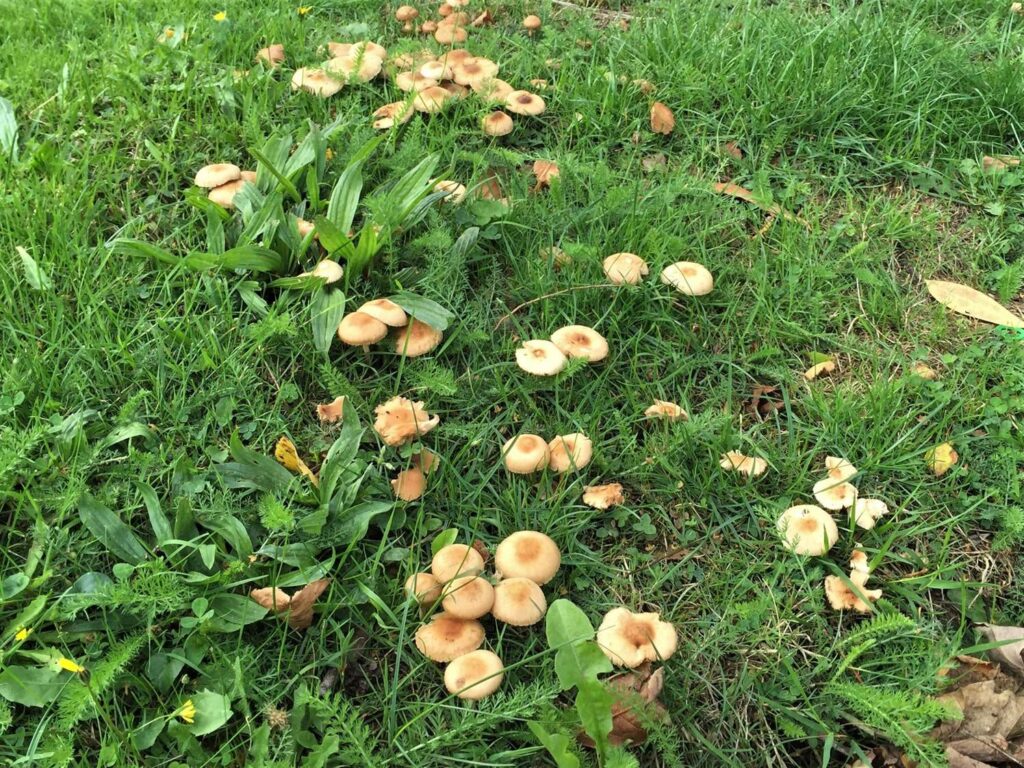
| Factor | Description |
| Ease of Identification | Moderate ●●○○○ |
| Toxicity Level | Varies by species, some are edible, others may be toxic. |
| Possible Risks | Risk of confusion with toxic species, ensure proper identification. |
Fairy Ring Mushrooms are a type of fungi known for their circular growth pattern in grassy areas. They’re common in lawns and meadows worldwide.
One notable thing about them is how they grow in circles or arcs. This happens because their underground structure, called mycelium, spreads outward, forming mushroom circles of varying sizes, depending on the species and conditions.
Fairy Ring Mushrooms include edible and toxic varieties. Eating the wrong kind can cause stomach problems.
Garden Giant (Stropharia rugosoannulata)
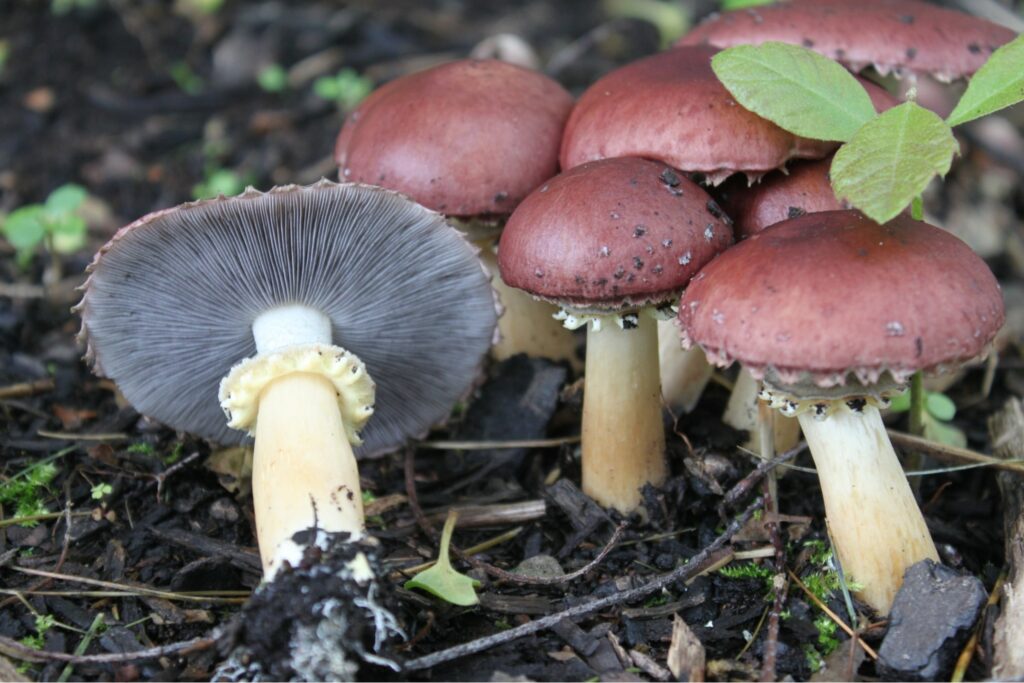
| Factor | Description |
| Ease of Identification | Easy ●○○○○ |
| Toxicity Level | Generally considered edible, low toxicity. |
| Possible Risks | May cause digestive discomfort if not cooked properly. |
The Garden Giant mushroom is a large mushroom commonly found in gardens. The Garden Giant has a cap that’s 4 to 10 inches wide when fully grown.
Initially, it’s bell-shaped and brown, but it flattens out and may get a darker center as it matures. The cap’s surface often has small scales, giving it a textured look.
It has a thick stem, which usually has a visible ring near the top. The stem’s color varies but is usually white to pale brown.
It’s also edible but should be thoroughly cooked to prevent digestive discomfort in some people.
Horse Mushroom (Agaricus arvensis)
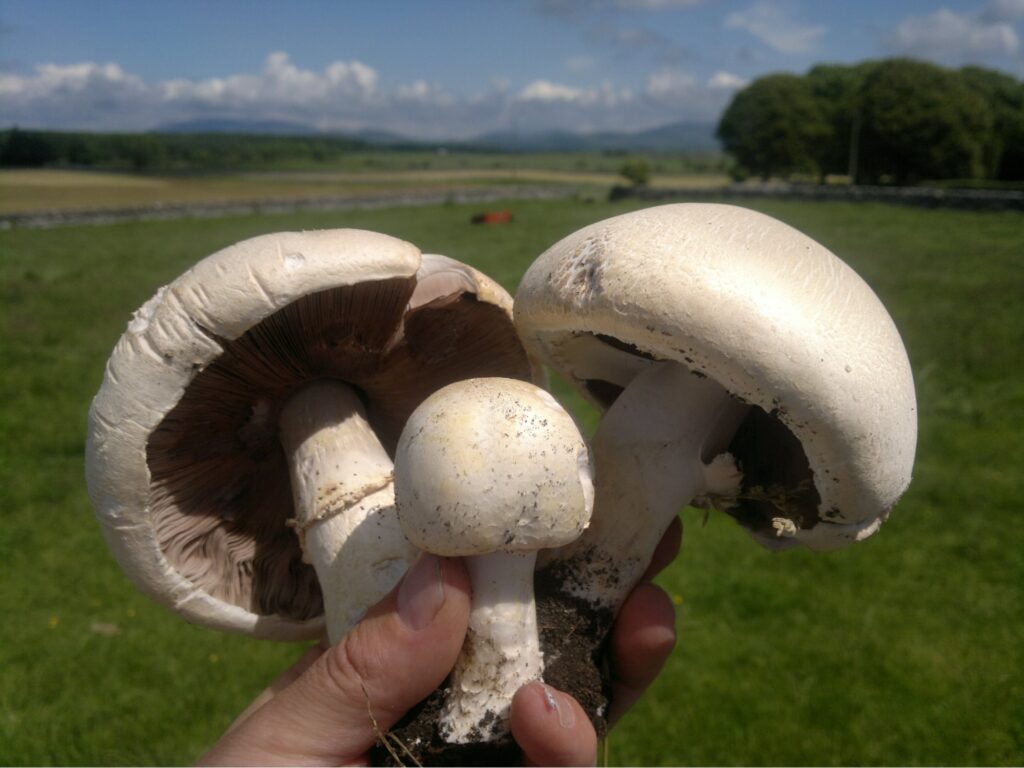
| Factor | Description |
| Ease of Identification | Easy ●○○○○ |
| Toxicity Level | Generally edible, low toxicity. |
| Possible Risks | Risk of misidentification with toxic species. |
The Horse Mushroom is edible but resembles toxic mushrooms, be a bit on the wary side if you decide to pick them for consumption. Otherwise, they’re harmless.
This mushroom has a convex or flat cap, 2 to 6 inches in diameter, with a smooth, creamy white to pale tan color and brown scales. As it matures, the cap flattens and the margin may become wavy.
The gills start white but turn pink and eventually brown as the mushroom matures. The stem is white and may have a fragile ring near the top.
While safe to eat for mushroom enthusiasts, it looks similar to toxic species like the Yellow Stainer (Agaricus xanthodermus). Always follow safe foraging practices and err on the side of caution when in doubt.
Wood Blewit (Lepista nuda)
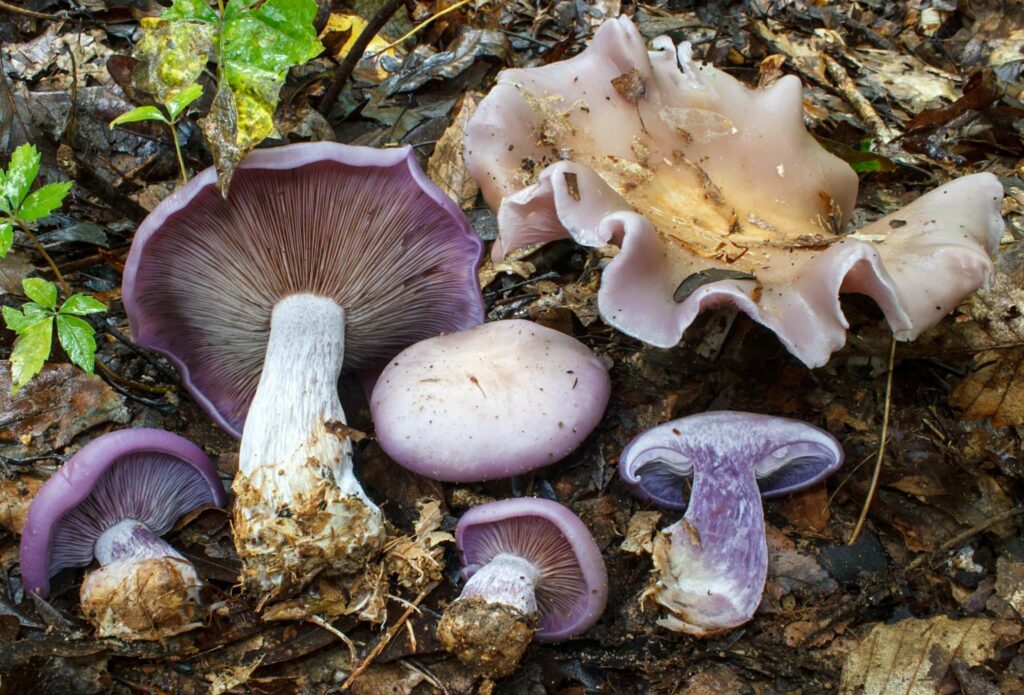
| Factor | Description |
| Ease of Identification | Easy ●○○○○ |
| Toxicity Level | Generally considered edible, low toxicity. |
| Possible Risks | May be confused with similar-looking species. |
The Wood Blewit mushroom is an edible fungus commonly found in wooded areas and gardens across the United States. The Wood Blewit typically has a lilac to lavender-colored cap, usually 2 to 6 inches wide.
The cap starts convex when young but flattens out as it matures, and its edges are often wavy. Underneath the cap, the gills are close together and lighter in color.
The stem of the Wood Blewit matches the cap’s color, ranging from lilac to lavender, and it’s cylindrical with a slight taper at the base. The mushroom’s flesh is thick and has a pleasant mushroomy smell.
In gardens, Wood Blewits can pop up spontaneously in mulched areas or wood chips, especially if there’s a mycorrhizal connection with nearby trees. While it’s generally safe to eat and not very toxic, there’s a risk of mistaking it for similar-looking species.
Turkey Tail (Trametes versicolor)
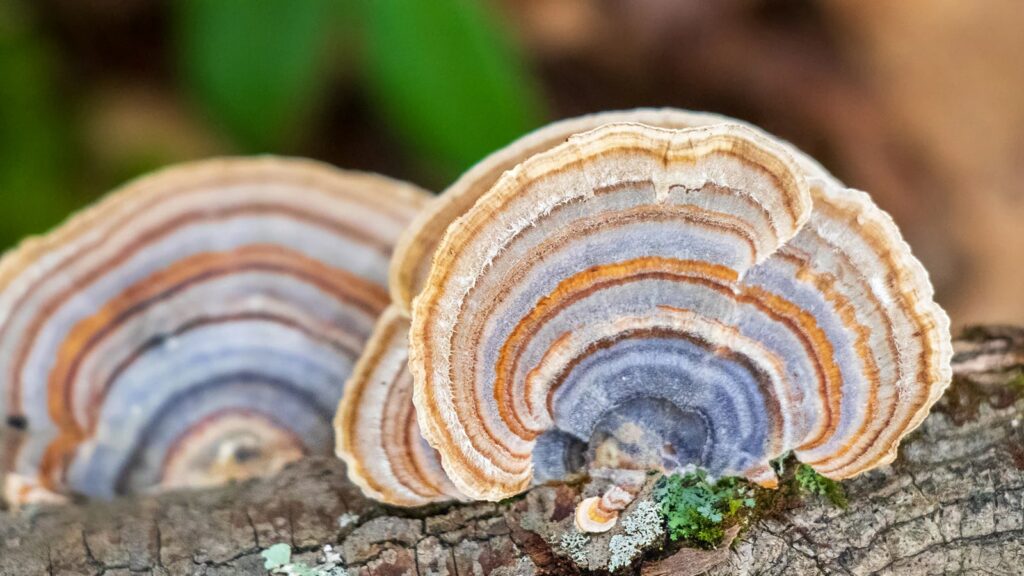
| Factor | Description |
| Ease of Identification | Easy ●○○○○ |
| Toxicity Level | Generally considered non-toxic, used for medicinal purposes. |
| Possible Risks | May be mistaken for toxic look-alikes. |
This mushroom’s name comes from its resemblance to a wild turkey’s tail. Turkey Tail mushrooms grow flat and thin, with concentric rings in various colors like brown, tan, green, and blue.
They create a distinct colorful pattern on the mushroom’s top surface, making them easy to spot when growing on logs, stumps, or decaying wood. They also contain compounds studied for boosting the immune system and acting as antioxidants.
They aren’t typically eaten due to their tough texture, but are used in herbal remedies and teas. One concern with Turkey Tail mushrooms is their similarity to other bracket fungi, some of which might be toxic.
Ink Cap (Coprinopsis atramentaria)
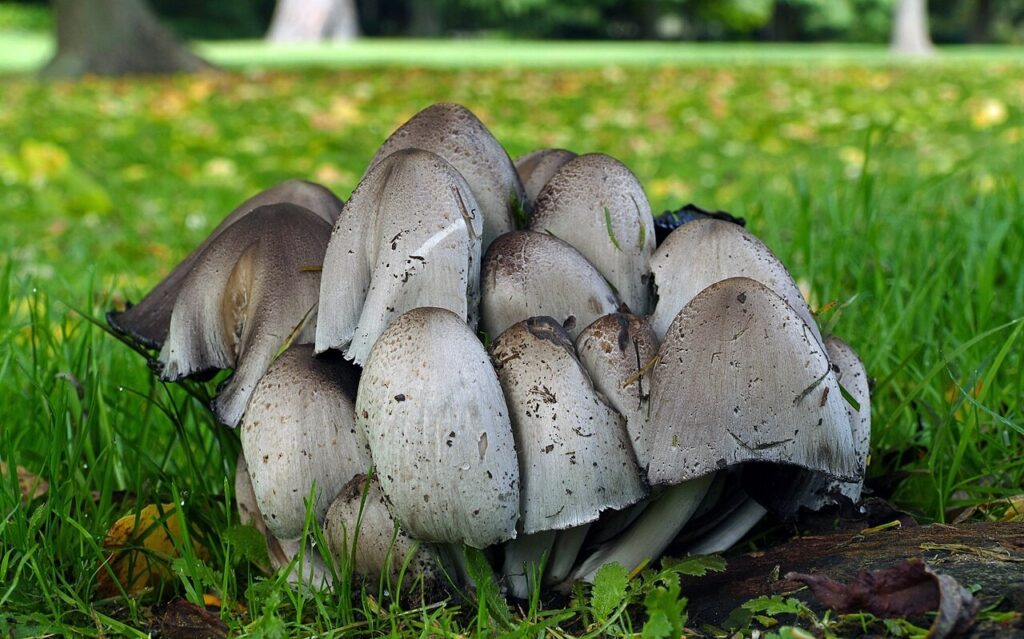
| Factor | Description |
| Ease of Identification | Easy ●○○○○ |
| Toxicity Level | Edible when young, but can cause reactions. |
| Possible Risks | Consumption with alcohol can lead to illness. |
The Ink Cap mushroom is known for transforming into a black liquid as it matures, which can be fascinating for mycology enthusiasts. It has a small to medium-sized cap, typically less than 4 inches wide.
In its youth, the cap is brown and curved. As it ages, it flattens and the edges curl upward.
What sets it apart is how its gills change. Initially white, they eventually turn into a black, inky substance, giving it a “melting” appearance, making it easy to identify.
The Ink Cap is safe when young and before it liquifies. However, some people may react negatively, especially if consumed with alcohol.
If you must, only eat Ink Caps when they are in their edible stage and cooked thoroughly.
Bird’s Nest Fungus (Crucibulum laeve)

| Factor | Description |
| Ease of Identification | Easy ●○○○○ |
| Toxicity Level | Generally non-toxic, not considered edible. |
| Possible Risks | None for toxicity, may appear unexpectedly. |
This mushroom is named after its nest-like structures that hold small peridioles resembling tiny “eggs.” Bird’s Nest Fungi are small, with mature fruiting bodies typically measuring less than half an in diameter.
They have a cup-shaped structure called the “nest” or “splash cup,” which is light brown. Inside the cup, you’ll find small spherical structures called peridioles containing spores.
When raindrops hit the cup, they can eject the peridioles, mimicking the dispersal of “eggs” from a nest, hence the name. Bird’s Nest Fungi are generally non-toxic but not consumed due to their small size and lack of culinary appeal.
They play a role in decomposition by dispersing spores and aiding organic matter breakdown. They help with decomposition and nutrient cycling.
Garden Parasol (Macrolepiota procera)
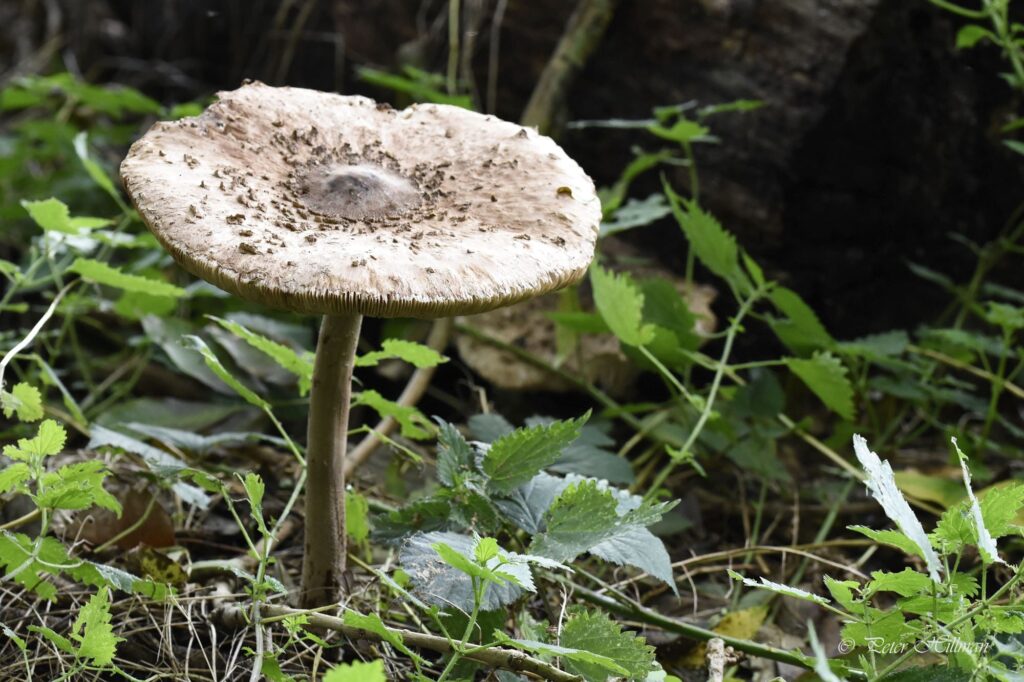
| Factor | Description |
| Ease of Identification | Easy ●○○○○ |
| oxicity Level | Generally considered edible, low toxicity. |
| Possible Risks | May cause mild digestive upset in some individuals. |
The Garden Parasol mushroom’s standout feature is its large umbrella-shaped cap, which can reach over 12 inches in diameter. The cap is light brown to tan with noticeable brown scales, giving it a unique appearance.
It stands on a tall, slender stem that can grow quite long. While generally edible with low toxicity, it may cause mild digestive issues in some if not cooked properly.
When harvesting for consumption, it’s best to pick young specimens with the cap not fully expanded for tenderness and flavor. Cooking the mushroom well is also recommended to ensure any potentially indigestible compounds are broken down.
Managing Mushrooms in Your Garden Bed
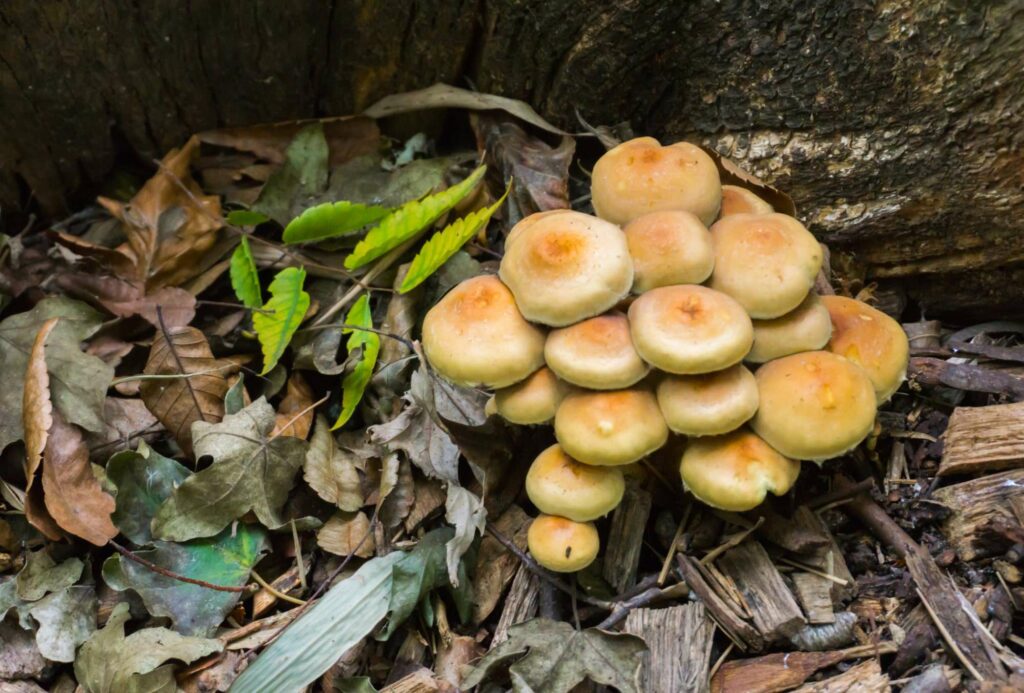
Mushrooms appearing in your garden can be surprising, but they’re not necessarily harmful. If you want to control their presence, we’ve got some practical tips just for you.
Remove Mushrooms
When you see mushrooms, simply pluck them out using a small tool or gloved hands. Dispose of them far from your garden to prevent their return.
Improve Drainage
Mushrooms like dampness, so improve garden drainage with organic matter like compost to avoid excess moisture.
Reduce Organic Matter
Mushrooms feed on decaying organic matter, so clean up fallen leaves and any plant debris in your garden regularly. Compost away from the garden to limit their food source.
Adjust Watering
Water your garden in the morning to let the soil dry during the day. You can avoid making the whole bed wet by using soaker hoses or drip irrigation instead of sprinklers.
Use Organic Fungicides (if needed)
For persistent mushroom or fungal issues, think about using organic fungicides. When using them, make sure you’re following the instructions carefully.
Aerate the Soil
When you aerate the soil, it reduces moisture buildup and enhances the existing soil structure. You can do this by creating small holes with a garden fork or using specific gardening equipment like soil aerators.
Be Careful with Mulch
Organic mulches like wood chips can encourage the growth of uninvited mushrooms to your garden bed. If you’re looking to discourage their presence, use less organic mulch or try inorganic mulches like gravel instead.
Maintain Garden Health
A healthy garden is less prone to mushroom growth. Try to practice good hygiene, proper plant care, and reasonable crop rotations to keep mushrooms from showing up without a formal invitation.
Why do mushrooms usually prefer to grow in raised garden beds?
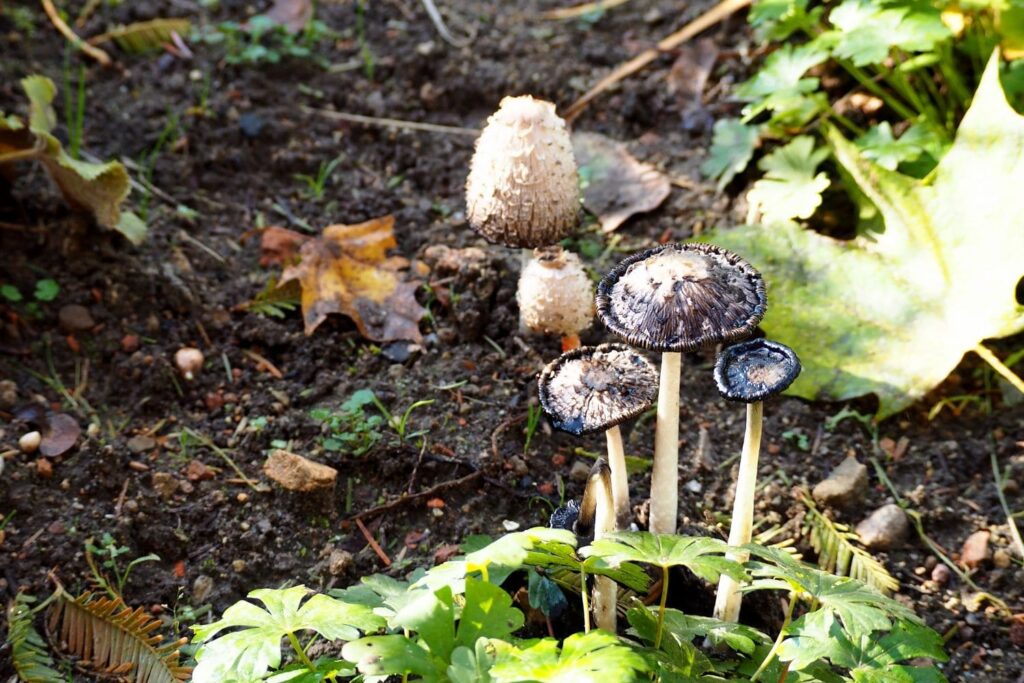
Mushrooms usually prefer to grow in raised garden beds due to high moisture, shaded spaces between beds, warmer soils, and the abundance of organic matter.
Raised beds tend to offer a stable environment for quick mushroom growth. They usually warm up faster in spring, drain well, and have rich organic matter from regular mulching, resulting in good soil.
Good soil and shaded gaps between beds are the perfect places for mycelia (that’s plural for mycelium) to grow and produce mushrooms. It would be best to keep an eye out for mushrooms if you have this gardening condition.
Are mushrooms a problem in raised beds?
Mushrooms pose no issues in raised beds. They actually benefit your plants by actively supplying nutrients, forming symbiotic relationships with deciduous fruit trees and bushes, and helping in breaking down fallen leaves, much like worms.
But if you don’t like their presence or fear poisonous varieties, they can become problematic. While poisonous mushrooms are rare, be a bit careful if you spot them in beds with edible crops.
Remove them immediately to prevent spread. On the other hand, you can let them grow quietly in a remote corner until they die off by themselves.
How do mushrooms develop in vegetable gardens?
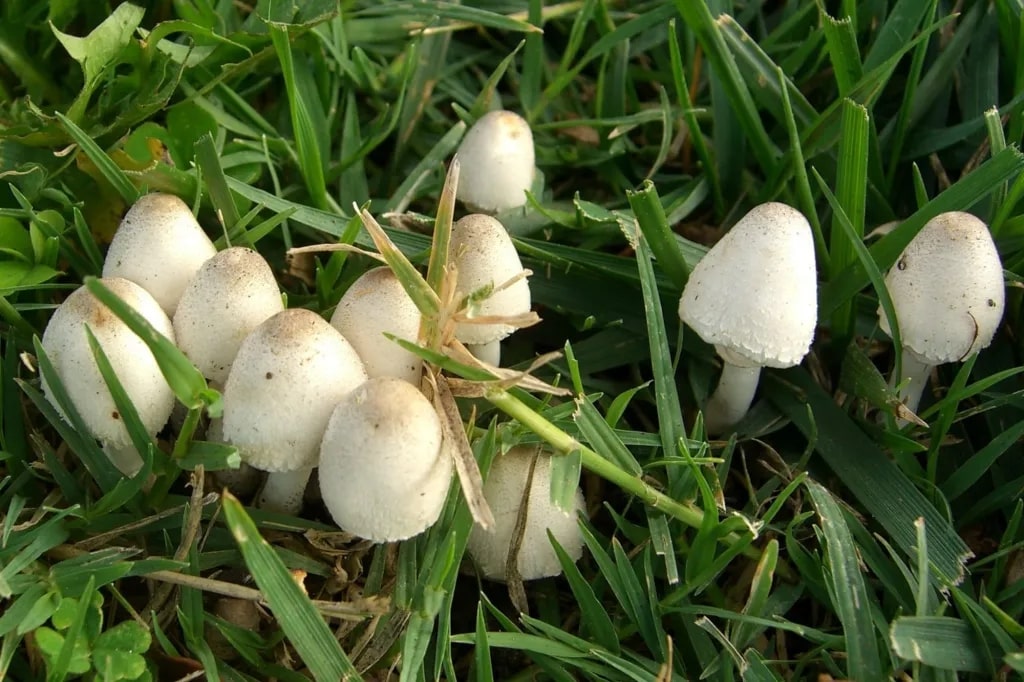
Mycelia exists in all compost and soil. This makes mushroom growth likely in your garden, even if you’ve never noticed it.
Areas with high humidity and slow drainage are more prone to mushrooms. They can develop rapidly if left undisturbed through late summer and fall.
Mushrooms are usually introduced through manure or damp compost. They can also come from untreated timber used for raised beds or old, treated timber.
And finally, slightly alkaline soil, often due to excessive calcium or lime application, encourages the presence of mushrooms.





